BU faculty affiliated with IGS discuss work in enhancing tree coverage, clean energy access, and urban heat mitigation
By Alison Gold
The effects of climate change in New England are already apparent and urgent: more extreme weather events, hotter summers, higher energy and insurance bills, and changes to regional food production patterns are among the environmental stressors confronting residents.
Sustainability experts from across Boston University (BU) are leading ambitious, community-based projects to mitigate these and other effects of climate change. At The Boston Globe’s 2025 Sustainability Summit, held on April 15 at BU’s Duan Family Center for Computing & Data Sciences, three faculty members affiliated with BU’s Institute for Global Sustainability (IGS) shared how they’ve turned research into action to build climate resilience in and around Boston.
In a panel titled “Climate Change in Boston and Solutions to Reduce Impact,” Distinguished Professor Lucy Hutyra (BU College of Arts & Sciences) highlighted a modeling tool she developed to help planners assess urban cooling solutions, Assistant Professor Anna Goldman (BU Chobanian & Avedisian School of Medicine) discussed how she is helping her patients pay their energy bills, and Associate Professor Madeleine Scammell (BU School of Public Health) explained her work identifying and cooling Boston’s urban heat islands. The panel was moderated by David Abel, a long-time reporter at The Boston Globe and a journalism professor of the practice at BU’s College of Communication.
United States Senator Ed Markey and former White House National Climate Advisor Gina McCarthy headlined the event, which drew attendees from across industries and sectors.

Modeling Tool Helps Urban Planners Cool Their Cities
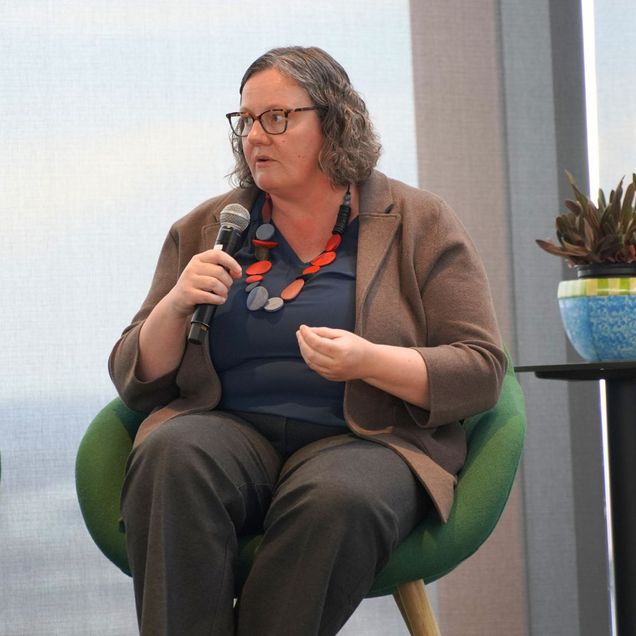
Everyone has experienced the cool relief of shade beneath a tree on a hot day. Trees also temper humidity and absorb warming carbon from the atmosphere. When trees thrive, everyone reaps the benefits, especially those living nearby.
At the Summit, Lucy Hutyra, a distinguished professor of earth and environment, emphasized that while many people are eager to plant new trees, resources must also be devoted to irrigating and maintaining existing trees in urban environments so they can grow.
“It’s the large trees that are evaporating the water, offering the shade, cooling our city, and creating that livable fabric that we want to live in,” Hutyra said.
Trees growing in urban environments like Boston face unique stressors, like limited underground space to spread their roots. Hutyra and BU colleagues were recently awarded $1 million from the W.M. Keck Foundation to continue investigating the mysteries of urban tree growth.
Trees are just one low-cost urban cooling intervention, Hutyra said. Another is painting roofs white to reflect sunlight away from buildings, decreasing the temperature inside and demand for air conditioning.
A few years ago, the city of Boston approached Hutyra, asking for a model to help them understand the cooling benefits and costs of these resilience measures and many others.
“I had no idea how to give them what they wanted, because the model didn’t exist,” Hutyra said. “And they persisted, and we came up with a way. So we built a new model.”
“I had no idea how to give them what they wanted, because the model didn’t exist. And they persisted, and we came up with a way. So we built a new model.” – Lucy Hutyra
During her sabbatical last year, Hutyra worked with Google to operationalize that model. It is now live in 15 U.S. cities to help decision-makers test how various climate measures could help cool neighborhoods. Crucially, the model allows experts to identify urban heat islands most in need of cooling interventions.
Now, Hutyra says, those using the model can “look at tree equity, you can look at the slopes of buildings, you can look at the color of roofs, and run scenarios of what if I change tree cover or albedo? And what will it do to temperature?”
Clean Power Prescription Program Connects Families to Clean Energy Benefits
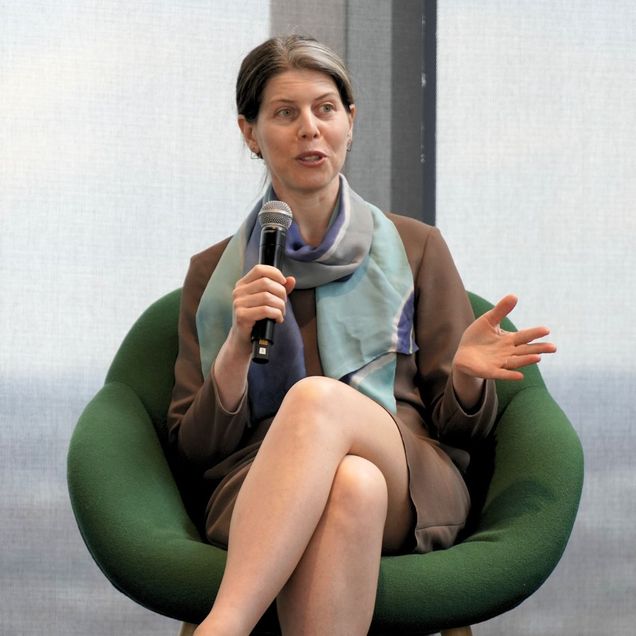
In her work as a primary care physician at Boston Medical Center (BMC), Anna Goldman screens patients for social determinants of health — life circumstances, like economic and housing stability and access to food and transportation, that affect a person’s health outcomes.
“One of those questions we ask is: ‘do you have trouble paying your utility bills?’” Goldman said. “And the answer to that was ‘yes’ for many of our patients. Massachusetts is one of the most expensive energy markets in the U.S.”
“One of those questions we ask is: ‘do you have trouble paying your utility bills?’ And the answer to that was ‘yes’ for many of our patients. Massachusetts is one of the most expensive energy markets in the U.S.” – Anna Goldman
Goldman, who is also an assistant professor of medicine, said that more than 70% of BMC’s patients self-identify as people of color, and 70% are publicly insured.
Determined to bring some of the benefits of clean energy to patients who otherwise may not be able to access them, Goldman worked with BMC’s Chief Sustainability Officer Robert Biggio to found the Clean Power Prescription program in late 2023. Through partnerships with Eversource and the SMART program from the Massachusetts Department of Energy Resources, BMC can help reduce patients’ energy bills using renewable energy credits from the hospital’s 365-kilowatt rooftop solar array.
“Essentially, we generate energy pool credits that go to our account at BMC, and we’re able to transfer that through Eversource, which is also partnering on this work, to patients,” she said.
The program reduces each home’s monthly electric bill by approximately $50, for a total of $600 saved on energy expenses each year. Currently, about 80 high-need households are participating in the pilot program. Goldman and Biggio hope to expand the program by building more solar on the BMC campus and partnering with residential and institutional partners.
“The most exciting way that I seek to expand is actually to have partners. Anyone listening to this could do this if you have a solar array,” Goldman said. “We can do it with residential customers. We can also do it with institutions and real estate owners. If you have a solar array or are planning on building one, it’s very easy to transfer credits.”
Those interested in contributing can email anna.goldman@bmc.org. At the 2025 Climate Leader Awards, Mayor Michelle Wu awarded Goldman the Boston Bright Future Award in the individual category.
C-HEAT Study Serves Urban Heat Island Communities
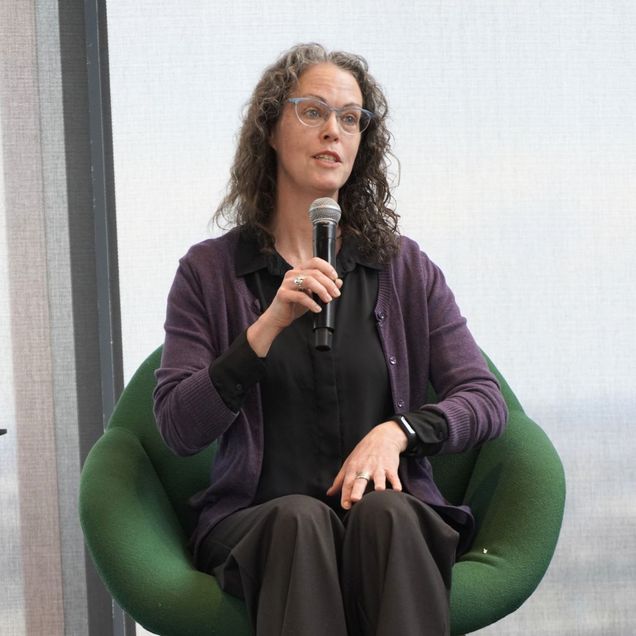
Madeleine Scammell, an associate professor of environmental health, spent years studying the deadly effects of extreme heat on workers in Central America. In 2017, she expanded her focus to address extreme heat in her town of Chelsea, Massachusetts.
While temperatures are rising everywhere, extreme heat disproportionately affects certain communities, often lower-income neighborhoods with fewer trees, less green space, and older housing. In the Boston region, Chelsea and East Boston are heat islands, where temperatures are often markedly higher than in other parts of the city.
In partnership with Greenroots, a local grassroots environmental justice organization, Scammell and project co-lead Patricia Fabian (SPH) launched C-HEAT, a collaborative research study to drive action. For the past five years, they have measured heat in neighborhoods all over Boston. At times, they have documented 10-degree differences between the coolest and hottest parts of the city.
Currently, heat emergencies are declared based on the temperature measured at the National Weather Station near Logan Airport. Taking the temperature at just one location does not always reflect the lived reality of people in different neighborhoods across the city, especially those in heat islands. This is a problem because resources such as cooling and hydration stations may only be offered once a heat emergency is declared.
“When there’s a heat emergency, we [in Chelsea] feel it first, and we feel it most, pretty much across the board,” Scammell said.
“When there’s a heat emergency, we [in Chelsea] feel it first, and we feel it most, pretty much across the board.” – Madeleine Scammell
C-HEAT is advocating for more temperature sensors across the Boston area to more accurately alert residents and prepare communities for heat emergencies.
The group also identified a particularly hot neighborhood block within Chelsea, and transformed it into the “cool block,” redoing the pavement to make it reflective and turning a parking lot into a greenery-filled park.
Scammell characterizes her wishlist for urban heat mitigation as “not rocket science.” Towns should retrofit buildings for energy efficiency, and introduce cool roofs, shaded bus stops, and hydration stations.
Undertones of Hope
With innovative, community-based solutions on full display all day, participants and speakers expressed optimism for the future of climate action.
Senator Markey pointed to clear momentum in electrification and clean energy installation. In 2009, he said, there were 2,000 total megawatts of solar energy in the U.S. Last year alone, he added, 40,000 new megawatts were installed.
“Around the world, last year, for the first time, there was more investment in solar than in oil globally,” he said. “Yes, we believe there’s an existential threat to the planet which climate change poses. But oil, gas, and coal know that wind and solar and other renewables are an existential threat to [them].”
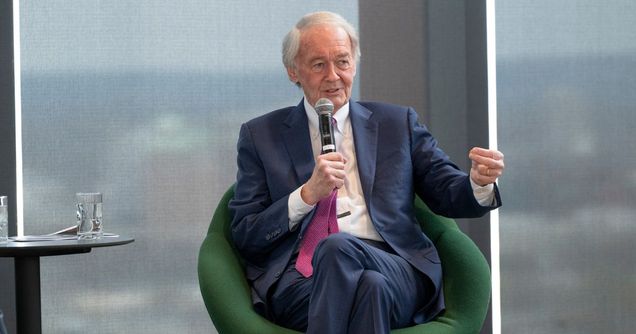
Dennis Carlberg, BU’s Chief Sustainability Officer and IGS affiliated faculty, highlighted BU as a local and global leader in both sustainability operations and research.
“At its core, Boston University’s mission is education and research,” Carlberg said. BU is “empowering our students to become the next generation of leaders in climate action and creating new knowledge that will provide a positive impact in our community and around the world.”
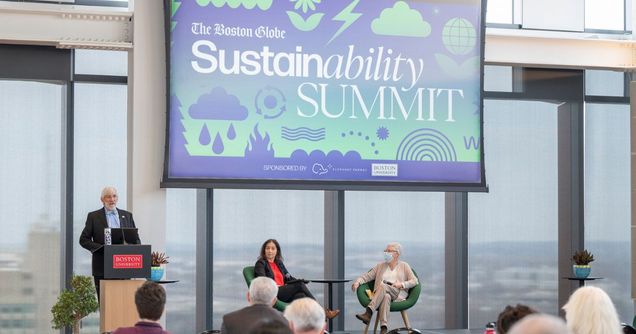
Boston’s position as a scientific hub driving climate action serves as a source of hope and motivation for Hutyra.
“I’m really hopeful, because I live in a city like Boston…” she said at the end of the day. “So if I could choose anywhere in the world to be, I’m in the right place. I’m proud of our city.”
